
A plane that crashed in Iran with 176 people on board was trying to return to the airport when it crashed, Iranian investigators have said.
The Boeing 737-800 went down just minutes after taking off from Tehran's airport, leaving no survivors.
An initial probe found the aircraft experienced a problem as it was leaving the airport zone, and was "on fire".
The crash came just hours after Iran carried out missile strikes on two air bases housing US forces in Iraq.
However there is no evidence the two events are linked.
On Thursday, Oleksiy Danylov, the secretary of Ukraine's security council, said investigators wanted to search for possible debris from a missile at the site of the crash. Iran is known to have Russian missile defence systems.
Amid high tensions - worsened by the US killing of top Iranian general Qasem Soleimani on 3 January - Iran has said it will not hand over the recovered black box flight recorders to Boeing or to the US.
Under global aviation rules Iran has the right to lead the investigation, but manufacturers are typically involved.
Iran's Civil Aviation Organisation (CAOI) chief Ali Abedzadeh said: "The plane, which was initially headed west to leave the airport zone, turned right following a problem and was headed back to the airport at the moment of the crash."
Mr Abedzadeh added that witnesses saw the plane "on fire" before the crash, and that pilots hadn't made any distress calls before trying to return to Imam Khomeini airport.
He said the initial findings had been sent to Ukraine and the US, where Boeing is headquartered. Sweden and Canada had also been sent the findings, as their nationals were on board, he added.
Mr Danylov said that the Ukrainian security council was examining various possible causes, including an anti-aircraft missile strike, a mid-air collision, an engine explosion or an explosion inside the plane carried out by a terrorist.
The investigation would include experts who worked on the probe into the 2014 downing of Malaysia Airlines flight MH17 in eastern Ukraine, Mr Danylov added.
Ukraine has declared 9 January a day of national mourning.
Normally, the US National Transportation Safety Board would have a role to play in any international investigations involving US-made Boeings. But the board must act with permission and in accordance with legislation of the foreign country concerned.
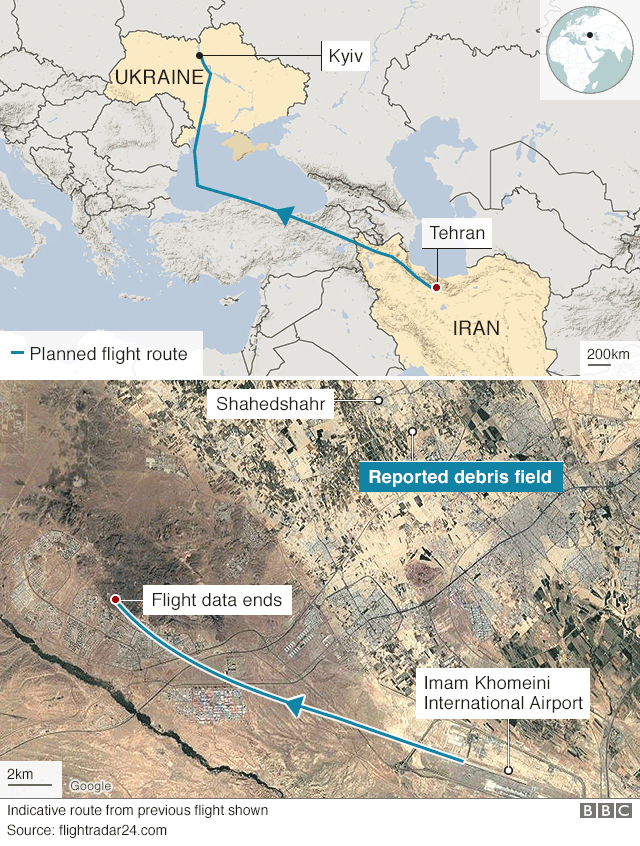
In comments published by Iran's conservative Mehr news agency, Mr Abedzadeh, said: "We will not give the black box to the manufacturer and the Americans."
"This accident will be investigated by Iran's aviation organisation but the Ukrainians can also be present," he added.
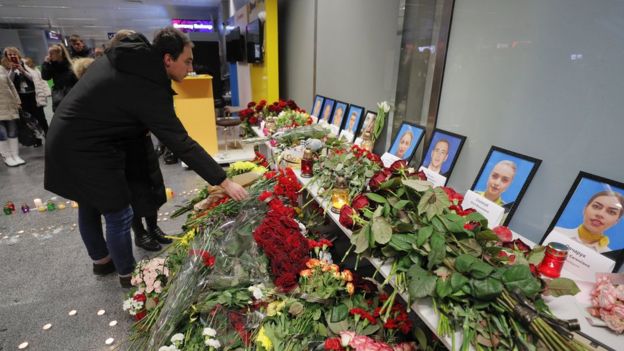
Tributes have been paid to the crew members at a makeshift memorial in Kyiv's Boryspil International Airport
Mr Abedzadeh said it was not yet clear which country would analyse the black boxes - a cockpit voice recorder and flight data recorder.
Ukrainian President Volodymyr Zelensky said in a televised statement that "a thorough and independent investigation will be conducted in accordance with international law", and that he would speak to Iranian leaders to step up cooperation in investigating the crash.
Boeing said it was "ready to assist in any way needed", while Canadian Prime Minister Justin Trudeau said his country expected to have a role in the investigation and had offered technical assistance.
The Ukraine International Airlines flight PS752 to Kyiv had 176 people on board when it crashed in Iran on Wednesday.
The majority of passengers were from Iran and Canada.
Ukraine's Tehran embassy initially blamed engine failure but later removed the statement, saying any comment regarding the cause of the accident prior to a commission's inquiry was not official.
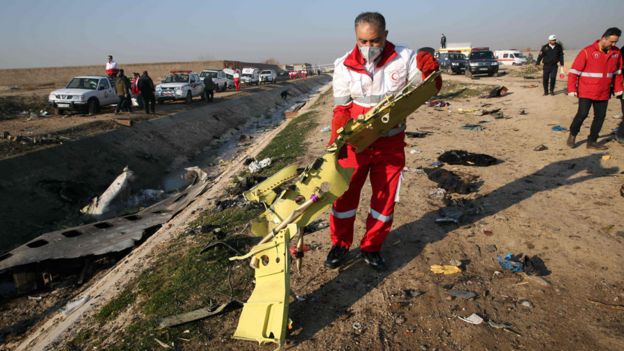
A team from Iran's Red Crescent searched the debris for victims
There was good visibility when the plane went down near Iran's capital, according to the Flightradar24 aviation website. Officials from the airline said the crew were experienced.
President Zelensky warned against "speculation or unchecked theories regarding the catastrophe" until official reports were ready.
Iranian media blamed technical problems and quoted an aviation official who said no emergency had been declared.
Mr Abedzadeh said "terrorism" had played no role in the crash, according to Mehr.
Among the victims were 82 Iranians, 63 Canadians, 11 Ukrainians including all nine crew, 10 Swedes, four Afghans, three Britons and three Germans, Ukrainian Foreign Minister Vadym Prystaiko said. Fifteen of the dead were children.
But the German government later said "we currently have no knowledge that German citizens are among the victims of the plane crash in Iran".
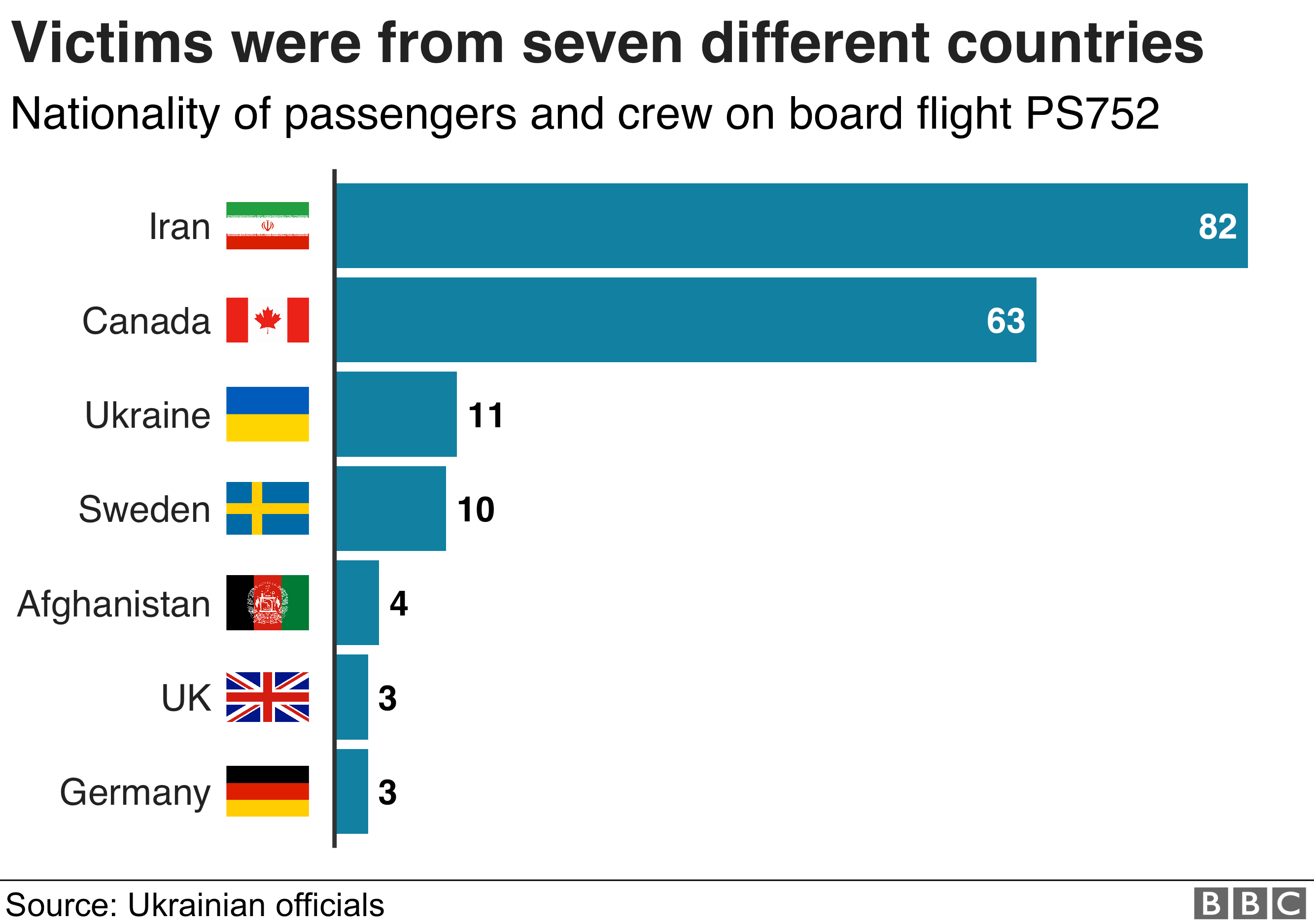
Iran's head of emergency operations said 147 of the victims were Iranian. That would suggest that 65 of the foreign nationals had dual nationalities. The Ukrainian airline gave a helpline number for further information about passengers: +38-044-581-50-19.
Mr Trudeau said 138 passengers on the flight were en route to Canada via Kyiv.
"All people who won't be coming home to their parents, their friends, their colleagues or their family," he said. "All had so much potential, so much life ahead of them".
Flight data from the Ukrainian Airlines Boeing 737-800 is openly available online. It shows that the plane climbed normally after taking-off from Tehran.
It reached nearly 8,000ft (2,400m) before the aircraft's data suddenly disappears.
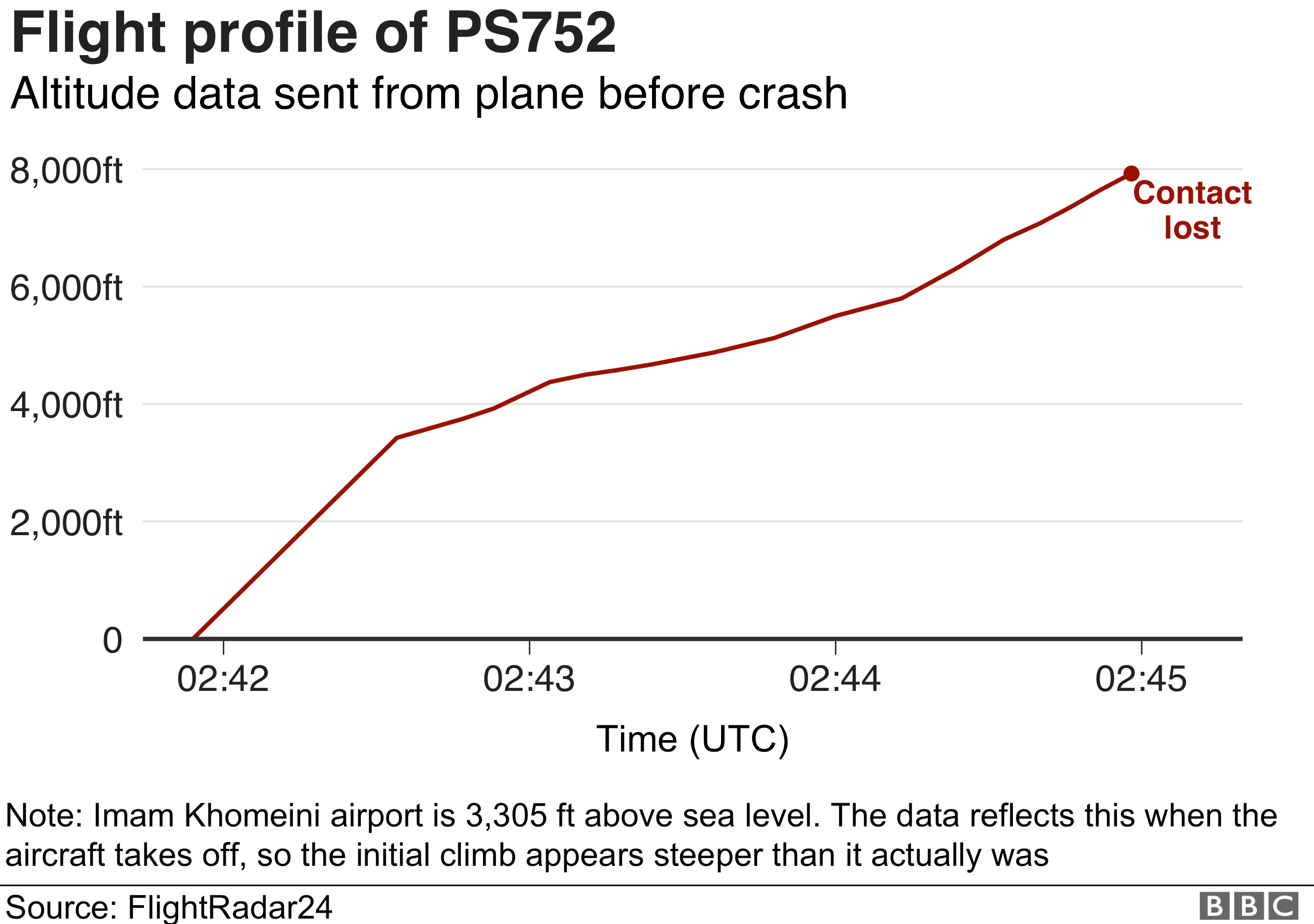
This is unusual and would suggest some type of catastrophic incident on board the plane. We have no evidence at this stage to tell us what caused the incident.
According to a former air crash investigator, any suggestion of engine failure feels premature. This possibility can't be ruled out at this early stage but an airliner such as the Boeing 737-800 is designed to keep flying if there is an engine failure.
Plus, if there was a failure then we would normally expect the flight data to show the plane's climb becoming less steep.